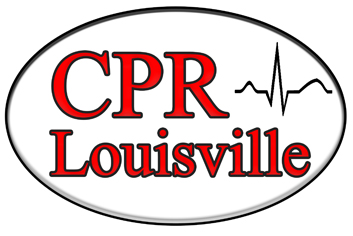UNKNOWN LAB REPORT
Unknown Number 114
Anne Doll
29 April 2014
Spring 2014
Introduction:
It can be important to be able to identify an unknown microorganism. For example, if a patient has an infection, the doctor can isolate the microorganism causing the illness. If the doctor can then identify which microorganism it is, then he will be better able to prescribe the best course of treatment to eradicate the infection in the patient. This lab simulated such a situation with the presentation of a mix of two bacterium which then needed to be identified. The isolation of Klebsiella pneumonia and Bacillus cereus was performed using the techniques and media studied previously in this microbiology class.
Materials and Methods:
The procedures described below came from the Lab Manual by McDonald, et al. Unknown tube number 114 was obtained. This tube contained one gram positive bacterium and one gram negative bacterium. The first procedure done was a series of streak plates in an attempt to isolate the two bacterium. Table 1 lists of all the streak plates done. All streak plates were incubated at 37 degrees Celsius. In addition to the single overlap streak method in the lab manual on page 10, several plates were streaked with the second, third and fourth streaks going through the previous streak multiple times. Several plates were also inoculated by dipping a sterile swab into Tube 114 and grazing the swab over the entire surface of the agar plate. These plates were all done in order to isolate the two bacterium from each other.
One bacterium was isolated through the streak plates, one was obtained in a pure culture on nutrient agar from the professor. Once each bacterium was growing in an isolated colony, each was gram stained (McDonald, p. 67). This was done to determine whether the isolated bacterium was gram negative or gram positive.
Once it was confirmed that the gram positive bacterium was isolated, two tests were run. First was the casein test to check for the production of the enzyme casease (MacDonald, p. 28). Then a glycerol fermentation test was run (MacDonald, p. 28) to determine whether the bacterium could ferment glycerol and whether it produces gas as part of that fermentation. This test was run to confirm the results from the casein test.
There were several tests run on the gram negative bacterium. First a Simmon’s citrate test was run following the procedure on page 36 of the lab manual (MacDonald). In addition, a casein test was performed. A lactose test was run next (MacDonald, p. 28). In a similar manner to the glycerol test above, this was run to determine if the bacterium can ferment lactose. Next a urea test was performed (MacDonald, p. 36) to determine if the bacterium produces the enzyme urease. Next was the methyl-red test, part of the MR-VP test (MacDonald, p. 36) to determine if the bacterium produces a mix of gases as it ferments glucose. Finally, a test was completed to check for the production of oxidase (MacDonald, p. 39).
Tables 2 and 3 show the tests done on each of the unknown bacteria.
List of tests run on each bacterium:
Tests run on the Gram Positive Bacterium:
- Gram Stain
- Casein test
- Glycerol fermentation test
Tests run on the Gram Negative Bacterium:
- Simmon’s citrate test
- Casein test
- Lactose fermentation test
- Urea test
- Methyl-red test
- Oxidase
Results:
Table one lists each of the streak plates prepared along with the results. Table 2 shows each of the tests run on the gram positive bacterium, the purpose of each test, and the results. Table 3 shows the tests performed on the gram negative bacterium, the purpose of each test, and the results.
The results are also shown in flow chart form, flow charts #1 and #2, showing the thought process that lead to the correct identification of each of the unknown bacteria.
Table 1. Streak plates
| PLATE NUMBER | DATE | ORIGIN OF BACTERIA | TYPE OF AGAR | STREAK METHOD | RESULTS |
| 1 | 3/20 | Tube 114 | Nutrient Agar | Single overlap | Growth on streak 1 only |
| 2 | 3/25 | Tube 114 | Nutrient Agar | Single overlap | Growth on streak 1 only |
| 3 | 3/25 | Tube 114 | Nutrient Agar | Multiple overlap | Growth on streak 1 only |
| 4 | 3/27 | Tube 114 | Tryptic Soy Agar | Multiple overlap | Overgrowth throughout |
| 5 | 3/27 | Tube 114 | MacConkey Agar | Multiple overlap | No growth |
| 6 | 3/31 | Tube 114 | Desoxycholate | Multiple overlap | No growth |
| 7 | 3/31 | Tube 114 | Mannitol Salt Agar | Multiple overlap | No growth |
| 8 | 3/31 | Tube 114 | Tryptic Soy Agar | Single overlap | Successful growth and isolation of one bacterium |
| 9 | 4/1 | Tube 114 | Eosin Methylene Blue Agar | Swab application over entire surface | Clear colonies |
| 10 | 4/1 | Tube 114 | MacConkey Agar | Swab application over entire surface | No growth |
| 11 | 4/1 | Tube 114 | Mannitol Salt Agar | Swab application over entire surface | No growth |
| 12 | 4/3 | Isolated tube 5 | Tryptic Soy Agar | Single streak | Isolated growth of bacterium |
Table 2. Tests run on First Isolated Bacterium
| TEST | PURPOSE | REAGENTS | OBSERVATIONS | RESULTS |
| Gram stain | To determine whether the bacterium is gram positive or gram negative | Gram’s Crystal Violet, Gram’s Iodine, Decolorizer, Gram’s Safranin | Purple rods | Gram positive rods |
| Casein test | To determine whether bacterium produces casease | Milk agar | Bacterium grew and cleared milk agar | Positive for casease |
| Glycerol test | To determine whether bacterium ferments glycerol | Glycerol broth tube with a pH indicator | Tube changed from red to yellow. Control remained red | Positive for glycerol fermentation |
Table 3. Tests run on Second Isolated Bacterium
| TEST | PURPOSE | REAGENTS | OBSERVATIONS | RESULTS |
| Gram Stain | To determine whether the bacterium is gram positive or gram negative | Gram’s Crystal Violet, Gram’s Iodine, Decolorizer, Gram’s Safranin | Pink rods | Gram negative rods |
| Simmon’s Citrate | To determine whether bacterium can use citrate as carbon source | Simmon’s Citrate Agar Slant tube containing sodium citrate, ammonium phosphate, and a pH indicator | Tube changed from green to blue. Control remained green | Positive for citrate use |
| Casein | To determine whether bacterium produces casease | Milk Agar | Bacterium grew, no clearing of the cloudy milk agar | Negative for casease production |
| Lactose | To determine whether bacterium ferments lactose | Nutrient tube with lactose and a pH indicator | Tube remained red. Control remained red | Negative for lactose fermentation |
| Urea | To determine whether bacterium produces urease | Nutrient tube containing urea and a pH indicator | Tube remained yellow. Control remained yellow | Negative for urease production |
| Methyl Red test | To determine whether a bacterium ferments glucose and produces a mix of acids | Nutrient tube containing glucose, peptone, and a pH buffer, and methyl red | Tube turned red upon the addition of methyl red. The control tube remained yellow | Positive for glucose fermentation and the production of a mix of acids |
| Oxidase | To determine whether a bacterium produces oxidase | Oxidase reagent | No color change | Negative for oxidase |
Discussion/Conclusions:
The attempts to isolate the two bacteria were partially unsuccessful. As shown in Table 1, multiple streak plates were done, using differing techniques, on differing media. One of the theories of what went wrong was that the inoculation loop was not fully cooled between streaks, so the heat killed the bacteria. Plates 2 and 3 (and all others after those) were carefully done with ample time between streaks for the loop to fully cool. A successful isolation of one bacterium occurred on Streak Plate 8, a zig-zag pattern streak, overlapping the previous streak just once, on tryptic soy agar.
The resulting growth on Streak Plate 8 was then gram stained. The result was gram positive rods. Only two of the possible bacteria were gram positive rods, thereby narrowing the bacteria down to either Bacillus cereus or Bacillus subtilis. The next test performed, the casein test, yields different results for these two bacteria. The casein test was positive, with obvious growth and clearing of the cloudy milk agar. This lead to the conclusion that the gram positive unknown bacterium was Bacillus cereus. Another test was then run that would also differentiate the two bacteria. The positive glycerol test confirmed the result that the unknown was indeed Bacillus cereus.
Further streak plates were done in an attempt to isolate the gram negative bacterium. Eosin-Methylene Blue (EMB) and MacConkey agars were chosen to inhibit the growth of gram positive bacteria, thus selecting for the gram negative that was still not isolated. Plate 9 was on EMB and resulted in clear colonies growing. This growth was gram-stained to check for purity. The gram stained slide showed both gram negative and gram positive bacteria. No further tests were run on the growth on Plate 9 because it was not an isolated colony of bacteria.
After eleven unsuccessful attempts to isolate the gram negative bacterium, an alternate sample of a purified colony of bacteria was obtained from Professor Snaric. This was a solid gel-like tube labeled Alternate 5. This was streaked onto a tryptic soy agar plate and resulted in isolated growth. When gram stained, however, it revealed gram positive cocci. Since the gram positive bacterium had already been identified and the alternate was to be gram negative, this sample and streak plate were discarded. A agar plate with growth on it was then obtained from Professor Snaric with the unknown gram negative bacterium.
When the agar plate unknown was gram stained, the result was gram negative rods. This isolated colony was then tested using the Simmon’s citrate agar slant tube. This was chosen because two of the possible gram negative unknown would test negative and three would test positive using this medium. This test resulted in an obvious color change from green to blue, meaning the bacterium was positive for using citrate as a carbon source. This narrowed the bacteria down to Enterobacter aerogenes, Klebsiella pneumoniae, or Pseudomonas aeruginosa. Due to time constraints, five tests were then run at the same time in an attempt to differentiate between the possible bacteria. Casein, lactose, urea, methyl-red (M-R), and oxidase test were all run. The five sets of results contradicted each other. Flow Chart #3 shows the tests and the results. The positive M-R test indicates that the bacterium should be K. pneumoniae. However, the urea and lactose test results show that it could not be K. pneumoniae. So if the M-R test is ignored, E. aerogenes seems like the best guess. However, the lactose test results say that it could not be E. areogenes. In a similar manner, the results for P. aeruginosa were contradictory, also. The casein, M-R, and oxidase tests rule out P. aeruginosa as the correct answer. At this point Professor Snaric checked the results. He informed me that my negative results from both the lactose test and the urea test were incorrect. Excluding those lead to the conclusion that the bacterium was K. pneumoniae. The reasons for the incorrect results on those two tests are unclear. It is possible that the bacteria didn’t grow at all, giving false negative results.
Bacillus cereus was the gram positive bacterium that was found. Originally isolated in 1969 (Bacillus cereus), it is most well known for causing food poisoning. This bacterium lives in soil, so it is easy to see how it would end up in many of our foods. It has been found in plants, eggs, and even meats (Bacillus cereus). Because it can make endospores, just heating it may not kill every little bit of the bacterium. Then if the food is left at room temperature for a while before being consumed, like at a buffet or picnic, the endospore can come back to life and start multiplying. When consumed, B. cereus can cause nausea, vomiting and diarrhea (Bacillus cereus). Aside from food poisoning, it is also an opportunistic pathogen that presents a problem, especially in hospitals, for the immunocompromised and premature babies. It can cause eye infections, periodontal disease, lung abscesses, and even endocarditis. (Bacillus cereus) B. cereus produces several exotoxins that damage human tissues. Specifically it produces hemolysins that damage blood cells and phopholipases which lyse phospholipids (Bottone). One of the challenges in dealing with B. cereus infections is that it produces B-lacatmase (Bottone). This enzyme makes it resistant to most penicillins and cephalosporins. Fortunately, B cereus is not yet resistant to vancomycin and ciprofloxacin (Bottone).
References
Bacillus cereus – MicrobeWiki – Kenyon College. (n.d.). . Retrieved April 25, 2014, from http://microbewiki.kenyon.edu/index.php/Bacillus_cereus.
Bottone, Edward J. (April 2010). Bacillus cereus, a volatile human pathogen. Clinical Microbiology Review, 23(2): 382–398. Retrieved April 25, 2014, from http:// www.ncbi.nlm.nih.gov/pmc/articles/PMC2863360/
McDonald, V., Thoele, M., Salsgiver, B., & Gero, S. (2011). Lab manual for General Microbiology.
###





